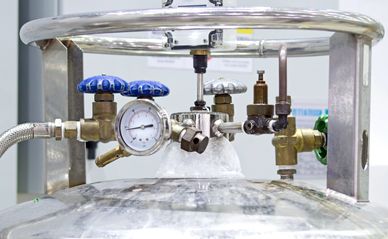Testing Services
Helium Leak Testing

Helium leak testing is a highly sensitive method used to detect small leaks in sealed systems, this method uses helium gas, a non-toxic, inert, and lightweight gas, which can easily penetrate even the tiniest leaks.
Moisture Analysis

Trace gas testing for oxygen and water vapor is a non-destructive analytical method used to detect and measure extremely low concentrations of moisture (H₂O) in controlled environments, sealed systems, or gas lines.
Particle Analysis
Particle Analysis

Particle analysis is the process of identifying and characterizing small solid or liquid particles in a sample typically to understand their size, shape, composition, and concentration.
Oxygen Analysis
Particle Analysis

Trace gas testing for oxygen is a non-destructive analytical method used to detect and measure extremely low concentrations of Oxygen levels in controlled environments, sealed systems, or gas lines.
Pneumatic Gas Testing

Pneumatic gas testing is a non-destructive pressure testing method used to check the integrity, strength, and leak-tightness of sealed systems by filling them with a compressed gas, such as air, nitrogen, or helium, and monitoring for any pressure loss or leakage.
Magnetic Testing

Magnetic Testing (MT) method used to detect surface and slightly subsurface discontinuities in ferromagnetic materials (like iron, nickel, cobalt, and their alloys.
Liquid Dye Penetrant testing
Liquid Dye Penetrant testing
Liquid Dye Penetrant testing

Liquid Dye Penetrant Testing (LPT) method used to detect surface-breaking defects in non-porous materials. It is based on the principle of capillary action, where a liquid dye penetrant is drawn into surface cracks or flaws.
Radiographic Testing
Liquid Dye Penetrant testing
Liquid Dye Penetrant testing

Radiographic Testing (RT) is a method used to inspect the internal structure of a component by using X-rays or gamma rays.
This website uses cookies.
We use cookies to analyze website traffic and optimize your website experience. By accepting our use of cookies, your data will be aggregated with all other user data.